Summary
For this Behind the Barrel feature, Germán González Gorrochotegui sat down with us to discuss the inspiration behind Tears of Llorona. Enthralled with his family craft, Germán studied under his father to gain a hands-on tequila education that has resulted in him becoming one of the most celebrated working tequileros.
His third and latest signature tequila, Tears of Llorona is a truly unique extra añejo - it has aged for five years, simultaneously through three different oak barrels: Scotch to get the dryness, Sherry to add a little fruitiness and Brandy to add a little sweetness. These layers add character without detracting from your ability to taste the agave in a way that wakes up your palate.
Here is what he shared...
How did Your Family Begin Their Work with Agave?
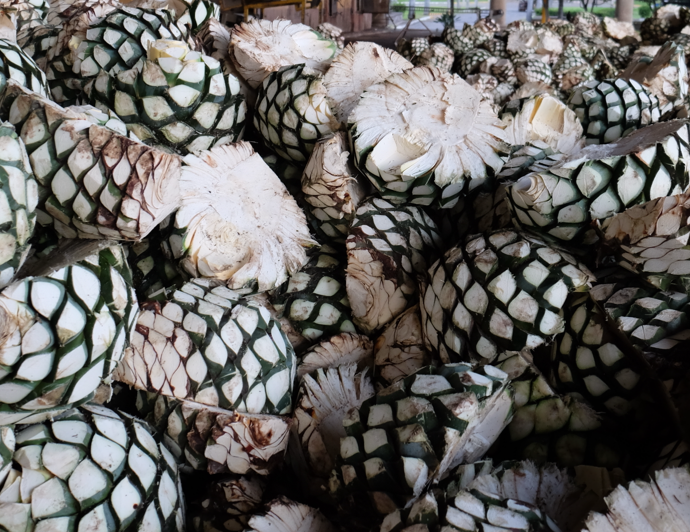
My great-great-grandfather, who was the president of Mexico, was from Tamaulipas. So, through the generations, my father got his ranch in Tamaulipas, and you know, there was a hurricane in 1965, and the hurricane destroyed all of my father's ranch. It went through the south part of Tamaulipas, and my father at that time was in the agriculture part of the government in agricultural insurance for the cavalry and the agricultural people. So, he had to travel all over the area. And he then started thinking about how to bring a new plant to the area. And because the agaves will always hold their soil, he started planting blue agave in the Salpa part of Tamaulipas.
It took some years until they grew up and got the maturity that was needed. And he started harvesting and people in Jalisco started to buy his agaves. But the big problem was that they didn't want to pay the price that was running in Jalisco. So, that's how he started building his distillery with the help of the Romo family; they lent him their engineer. He built his distillery in 1972. It was a little difficult for him to start selling. At that time, there was no official Mexican norm for tequila.
But when they made that a norm, they didn't include Tamaulipas in the map, and at that time the map was all of the state of Jalisco, some municipalities of Michoacán, Nayarit and Guanajuato but Tamaulipas was out of the protection. My father was a very focused person to do what he was looking for; he just had to fight the whole tequila industry for four years until he got protection extended to Tamaulipas.
What makes Tamaulipas so Unique and Special to You?
There are 11 municipalities in the south-central part of Tamaulipas. It's a very interesting region; the soil is completely different. When most people talk about lowlands in this region, they haven't been in Tamaulipas, because Tamaulipas is only 185-meters above the sea-level. So, it makes a very unique product. And it was here that I learned everything from my father. We have always only made 100% agave; that's the only thing that I know how to do and work with. And his brand jumped into the United States back in ‘83 as the first super premium tequila in the States.
So, he created a category when it was not very easy, because you know, at that time, the most expensive tequila was like $12 because maybe 99% were blanco or joven. And his product came to America at a price of $25, so it had to open a new road for tequila in the states. And his work made a huge difference for the industry and impacted me tremendously. This is how I learned how to use barrels; the aging was from my father.
How Then did You Start to Develop Your Own Approach to Tequila?
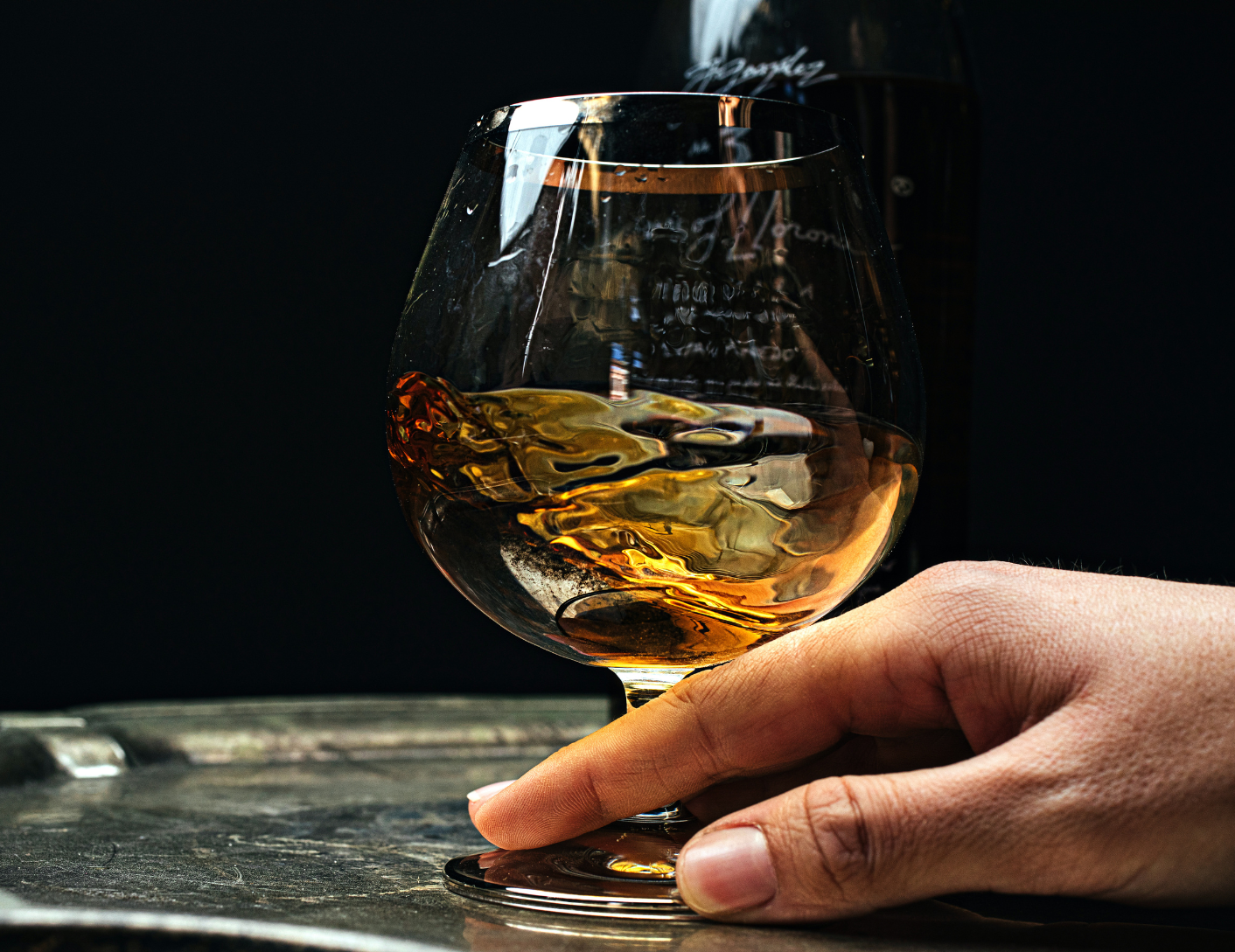
During most of the year, I was in Mexico City, and it was very comfortable to live there. But I would spend my summers since I was 13 years old at the ranch with no electricity. It was completely different; the weather is super hot down there. But you know, it was here that I started to get the passion for agriculture and the plantations. And for most of it, I started working with the agave plants. So, I have been working on growing agaves for many, many years. And I got into the distillery once I was 18 years old, and just watching and smelling and learning, that's how I started.
In 1994, as I took over there was the company and La Gonzaleña distillery. I had developed the background from my father, and I just did what he was doing. If it works, why change it? Then my father passed away and I was working at the distillery. It's a family company. And I come from a small, Mexican family of nine. And of course, being number seven of nine, it was a little difficult.
How did You Transition from the Family Business?
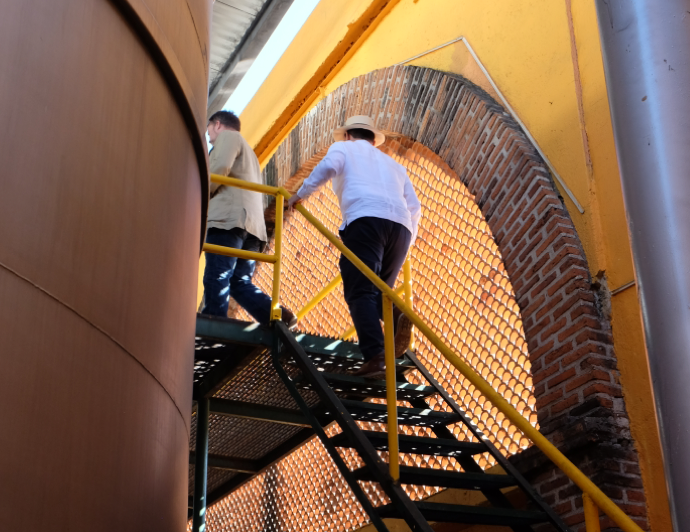
In 2007, we decided it was a good time for me to start my own business. At the time, I was flying to the distillery once every two or three weeks. Because everything in this is about passion. And I love what I do. Visiting the ranchers, the plantations, getting the right agaves which is the main thing. The raw material has to be mature agaves; not just agaves, but real mature agaves, which gives you the flavors at the end.
It was difficult for me, but you know, through the years I have come to understand that it was the best for me to start my own things. At that time, a good friend of mine who is my best-best friend, because he is the biggest agave grower in Jalisco. So, he has to be my good friend. He also has a distillery. He called me and said, you know, whatever you want to do, these are the keys of my distillery. Come and work, whatever you want at the distillery. It was 2009 when I started working at his distillery with his agaves, which I liked very much because they are specifically from the Atotonilco area at Los Altos del Jalisco.
But it's very interesting because these agaves are from red soil on the mountain. And then I choose some from the valley, which is very dark, very black; a little bit from the black soil. When you go to the highlands, and you see Arandas on one side and Atotonilco on the other side of the mountain, the agaves are different.
Arandas is much more on the flowery area; Atotonilco, that's the one that I like because it can have more citrusy flavors. So it makes a more arable profile for tequila. And, you know, I have seen all the agaves: the lowlands, the highlands, Tamaulipas, and each one is just like grapes. Their main difference is that we only have one variety of agave to produce tequila. But every soil will give you a completely different profile.
What are the Unique Features of Tears of Llorona?
If you see my Tears of Llorona bottles, we add a sticker with a Mexican flag, and it has a little logo icon at the end. That icon means that it's one specific batch. So, I have the star batch, diamond batch. All of them have the same kind of way of flavor, but with different colors. The only way to maintain that quality without adding flavors or coloring is that the agave always comes from the same region. And has the same process.
The agaves are from the highlands, whereas I do the process in Tequila, in the lowlands. I love the lowlands’ well water. It's amazing. It's a way to create something unique. And all of the aging takes place on the highlands again, because the lowlands are dry and the highlands have a lot of humidity. So, we don't give a lot to the angels but the result is amazing.
What makes Your Barrel Aging Process Unique?
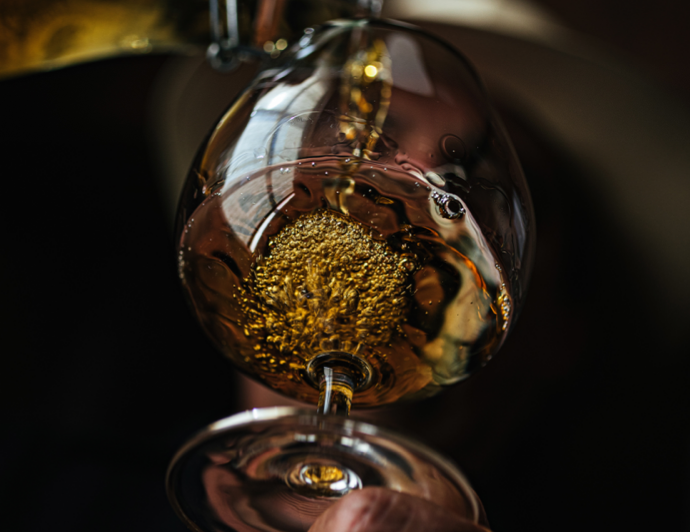
In maybe 2008, someone gave me a cognac. And I'm not a cognac drinker. But you know, it was a super beautiful bottle. And I told myself, you have to taste this; it was amazing to have all of these peach flavors. That's something that we have and can do in tequila. And in order to get there, we'll have to work with barrels, with the wood. And that's how I started experimenting with scotch, brandy, sherry; I have cognac, port and some other barrels.
But you know, the one that made it for me was scotch. That's something that I learned from my father. I don't actually like bourbon barrels; I know that most tequila is aged in bourbon barrels, but I don't believe in those barrels because they are too strong. So they overtake the agave flavors completely. And that's something that we don't want. I want to keep the greens from the agave. And these used barrels will give something to your product but without taking over. That's why I love to have those green dots on the layers that open on the Tears when you let it breathe. So you have the scotch, especially for the dryness. And there's no special area where I bring my barrels from, although people always ask.
And Sherry. Sherry's something I love sharing with the family in a Spanish restaurant. I will always ask for a vino to start before you begin eating. I like the fruitiness that it adds to the Tears.
And then when we have the Brandy as a way to make it a little sweet but without making it an overly sweet tequila. I'm not into producing a sweet tequila that covers the agave flavors. Brandy is sweet, but it's dry, and it's a little complicated. All of these barrels, I always say that they are five years old.
But some of these barrels are, as you know, completely different from the other ones. Even if the product comes from the same source, it's different. Some of them will give me the profile flavor that I'm looking for when they are like four and a half years; some take five, and some of them take six years. So at the end, I do the blending. It takes me like two days of tasting a lot of barrels during the blending, but I love to do that. And it's a pleasure. I always say that if you drink enough, the spirits will talk.
Where did the Inspiration Behind Tears of Llorona Come From?
A friend had invited me to Florida. And we enjoyed very nice jazz. And because I'm Mexican, all of the music was in Spanish, and they started playing the La Llorona song, which is a very romantic song. And I told him the legend behind it, which by the way, my father would always tell me if you don't behave, that La Llorona will come and pick you up.
When we tried to do their registration of “Llorona”, because it sounds a lot like “Corona”, they told us, “we don't have a problem, but we won't let you use the name.” So, that's how we came into the Tears of Llorona, based on the Mexican legend of the Llorona. But once you take more time and read a little more,this song has nothing to do with the Mexican legend. This song is a very romantic song in the times of the Mexican Revolution, when this guy was going to the revolution and he saw his wife coming out of the church, very elegantly dressed, as they do in Oaxaca. And she was crying. So that's why it’s Tears of Llorona. But there's two versions, but you know, I like the song better.
How Unique is Each Batch of Tears of Llorona?
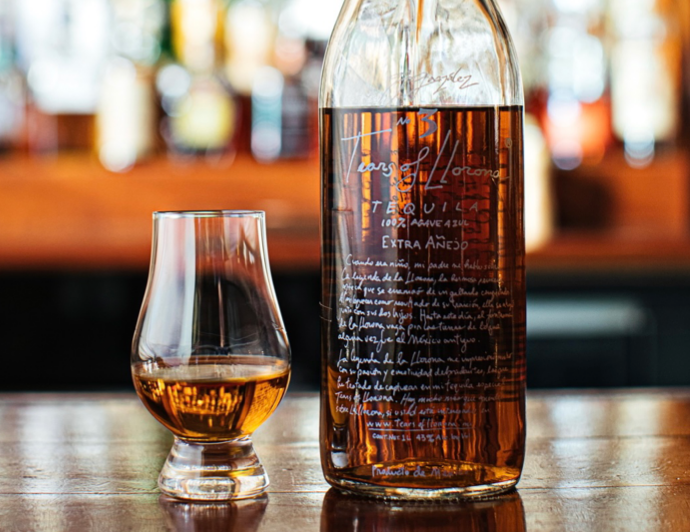
I really believe that your batches cannot jump from one profile to another. Because if that's happening, it’s because your source of agave is different, or you're making a different process, for example, in the fermentation, so there's something that it's changing a lot. In my case, I have tried to work as close as possible, but I know that it's impossible. Because we don't have additives that can help make subtle adjustments. So it's close. If you go side by side, you'll see the difference. But if you're doing one batch today and the other batch tomorrow, you will not notice the difference. And it's very interesting because you know, when I'm doing the tasting it’s not like it's 30% of each of these barrels, so I change because you're looking to get around the color, and around the flavor.
Most of the time, we have more scotch whisky barrels. But you know, it varies and the idea is to be as close as possible. It's fun to also enjoy those little nuances. That's what tends to bring me back to the same bottles; how this is nuanced a little bit where I can try to pick out something that I didn't see the last time.
Sometimes I see that some of my batches are more arable, then the other ones a little more dry. But generally I try to do it as similar as possible. But barrels are unique. It's just like grapes. But the main difference is that it takes eight years to mature the agave, and it really depends on how the last year was; was it a very rainy year? So everything changes; every detail can make an impact. Even if you're making a blanco with no additives, it will be almost impossible to get this exactly the same.
How should Tears of Llorona be Enjoyed?
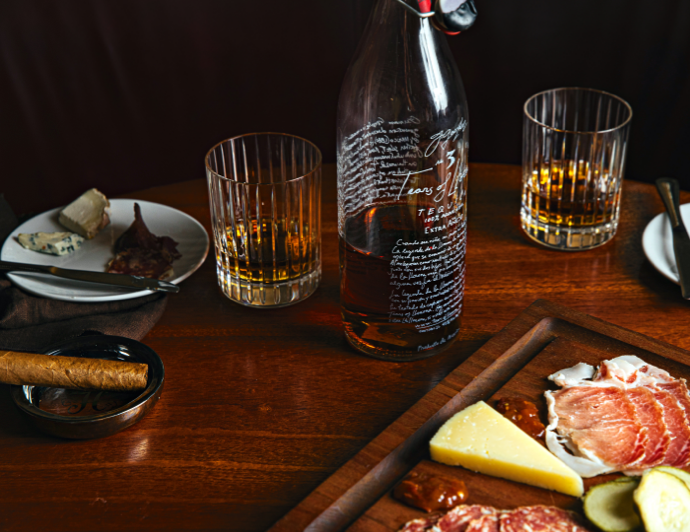
Well, you know, I always say the best way to drink Tears is with friends, but only with the best best friends. Because the bottle goes really fast.
I love it neat. But you know what, I also love it with a good coffee. So, sometimes I have a coffee in one hand and Tears in the other one. You don't have to add sugar or anything else. You know, they compliment very well.
I also love it with cigars. So, it's just by going back to the basics, where I want my tequila to be is where the super high-end cognacs, single malts and bourbons are, and that's with the cigar people. They love a good spirit to sit and enjoy and have your cigar at the same time.
Is There Anything Else You Would Want to Share in Closing?
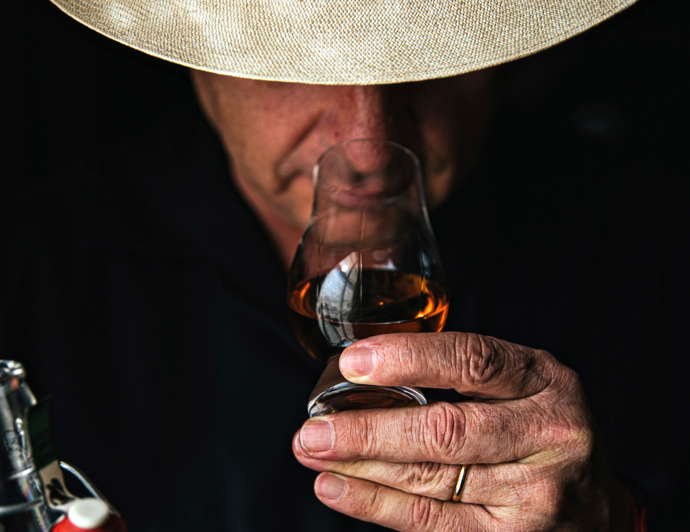
One of the main things that I have seen with a lot of people that don't like tequila, it’s because they had a really bad experience with it when they were very young. However, when they start tasting the 100% agave, they’ll see that they have a different feel. But once you taste Tears of Llorona, it’s an eye opener to learn that tequila can be at the same level as the super high ends of the spirits of the world.
And the expression that I have heard the most is “whoa”. Because they can’t believe that the results are just so different from what they were expecting. And once you've had it with coffee on the side, you will see.









